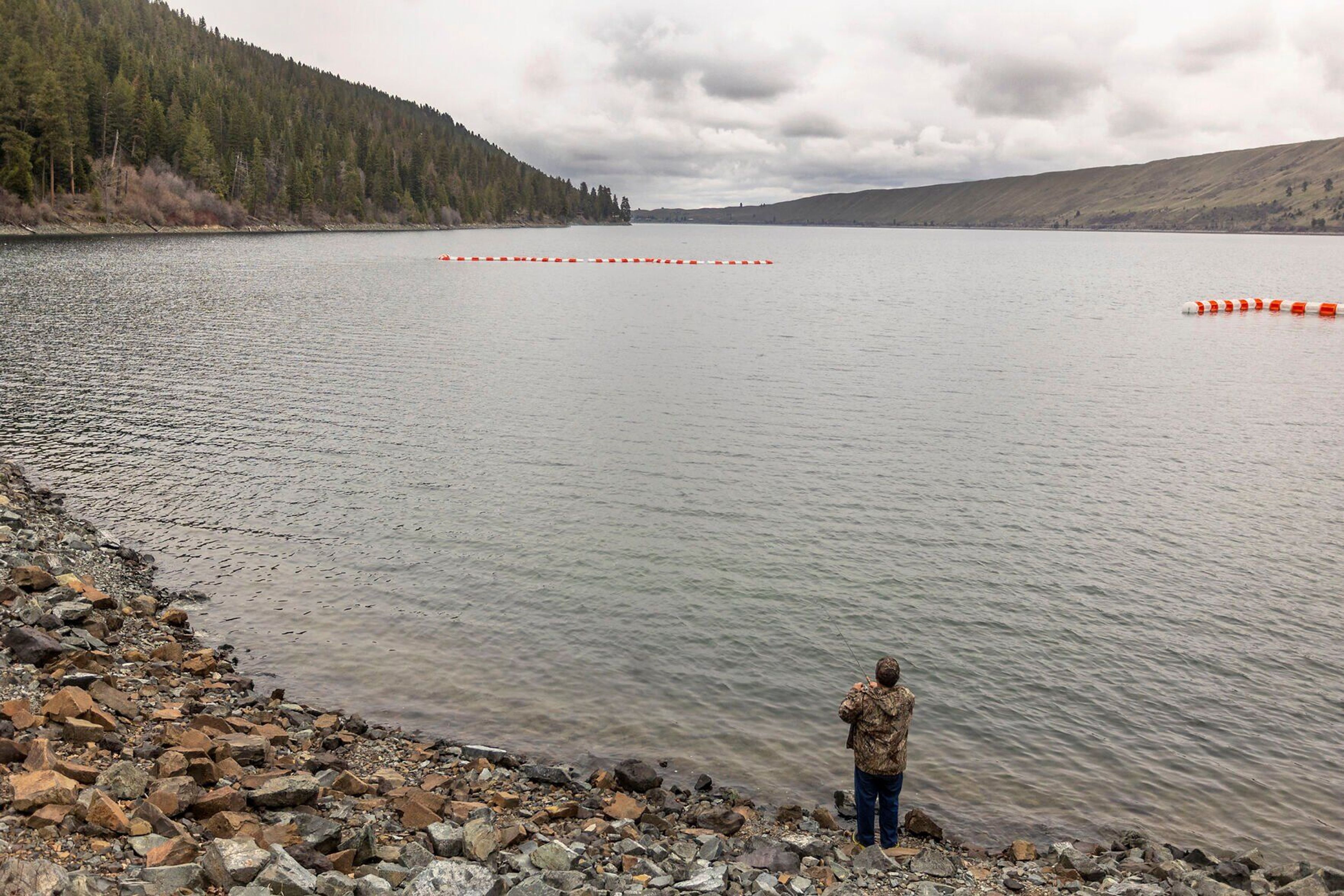Feds say breaching needed to meet fish recovery goals
Biden administration stops short of endorsing dam removal on lower Snake River
Federal officials in charge of protecting threatened and endangered salmon runs now say breaching one or more of the four lower Snake River dams, combined with a suite of other actions, is required to recover the fish to healthy and harvestable levels.
They also commissioned an independent analysis that indicates replacing the power and grid services provided by the dams while also meeting the clean energy goals of Washington and Oregon could cost $11 billion to $19 billion under most scenarios, but could balloon to $75 billion in one they called unrealistic.
Together, the two documents released this morning show the Biden administration is willing to entertain restoration of the lower Snake River to its free-flowing state to give the wild salmon the best chance at recovery and the government its best shot at meeting obligations outlined in treaties with several Columbia Basin Indian tribes. It’s a move that other administrations have been content to sidestep because of its significant downsides, such as the loss of about 900 megawatts of hydropower annually and the elimination and tug-and-barge transportation between Lewiston and the Tri-Cities.
But it’s also an indication that the once-unthinkable idea of dam breaching continues to build slow and steady momentum. Breaching was endorsed last year by Rep. Mike Simpson, R-Idaho, in his $33.5 billion Columbia Basin Initiative and one that may win the support of Washington Gov. Jay Inslee and Sen. Patty Murray.
Brenda Mallory, chairperson of the White House Council on Environmental Quality, said Monday the administration is not endorsing breaching or any other strategies outlined in the report, but it is clear current salmon recovery efforts are not working and the goal of both documents is to inform regional and national leaders as they strive to formulate long-term fish recovery strategies.
“Developing this kind of information is critically important to being able to honestly assess the opportunities, the challenges and the costs of restoring the health and abundance of salmon in the Columbia River Basin,” she said.
The first document examines ways to reach salmon and steelhead recovery goals for the Snake River, middle Columbia River and upper Columbia River formulated by the Columbia River Partnership Task Force, a group of regional stakeholders convened by NOAA Fisheries. The task force set fish abundance goals well north of those that would lead to the fish being removed from federal protection but significantly short of historic returns.
The report from the National Oceanic and Atmospheric Administration calls for a comprehensive package of actions to boost fish abundance but says some actions — such as dam breaching on the Snake River, improved fish passage at lower Columbia River dams and reintroduction of salmon and steelhead to the upper Columbia River — are critical. It says those steps, combined with continued efforts to improve estuary and tributary habitat and reduce the impact of predators, are all the more urgent in the face of climate change.
“We know these will be difficult and costly. We're now inviting the tribes and the states who are our long term partners and co-managing the fisheries to contribute their expertise and their knowledge to improve our draft report, and to help us define the next steps that we can take together in the Columbia Basin,” said Janet Coit, assistant administrator for NOAA Fisheries.
The second report, commissioned by the Bonneville Power Administration and compiled by Contractor E3 — Energy and Environmental Economics — said replacing the power and grid services of the four dams will be more difficult as Oregon and Washington implement increasingly strict clean energy standards. It will require 2,300 to 2,700 megawatts of new resources at a cost of $11 billion to $19 billion, and will likely rely to some degree on emerging technologies like advanced nuclear energy and carbon capture.
It could cost rate payers $100 to $230 per year. Under a scenario in which all of the power is replaced by existing green sources like wind and solar and no burning of fossil fuels is allowed, the cost could rise to $75 billion.
“(The Department of Energy) does not believed that scenario is realistic, and that the costs associated with that scenario, which are of course higher than the cost in the core reasonable scenarios, should not be taken as representative,” said Jeremiah Baumann, chief of staff for the Office of Infrastructure at the Department of Energy.
Shannon Wheeler, vice chairperson of the Nez Perce Tribe, said the assessment from NOAA Fisheries is welcomed. The tribe has long supported dam breaching and is a key manager of salmon and steelhead in the Snake River Basin. The tribe’s 1855 Treaty guarantees its right to fish for salmon.
“It’s just recognizing that the status quo and the work that is being done in the area of habitats that are being restored haven’t yielded the results that were expected and that larger dials need to be turned,” Wheeler said.
Chris Woods, president and CEO of Trout Unlimited, said the findings have long been known, even to government officials.
“We can replace every single benefit provided by those dams but the salmon and steelhead need a river, it's not any more complicated than that,” he said.
Kurt Miller, executive director of Northwest RiverPartners, called the NOAA report troubling and said it contradicts earlier federal documents that indicated while breaching the dams may help, it was not needed.
“The truth is that breaching the dams will cost the region’s electricity customers billions of dollars and add to the problem of climate change, which is the most serious problem facing salmon.”
The Rebuilding Columbia Basin Salmon and Steelhead report is available atbit.ly/3IDZP8Eand the BPA Lower Snake River Dams Power Replacement Study can be found atbit.ly/3Iu0CJf.
Barker may be contacted at ebarker@lmtribune.com or at (208) 848-2273. Follow him on Twitter @ezebarker.








